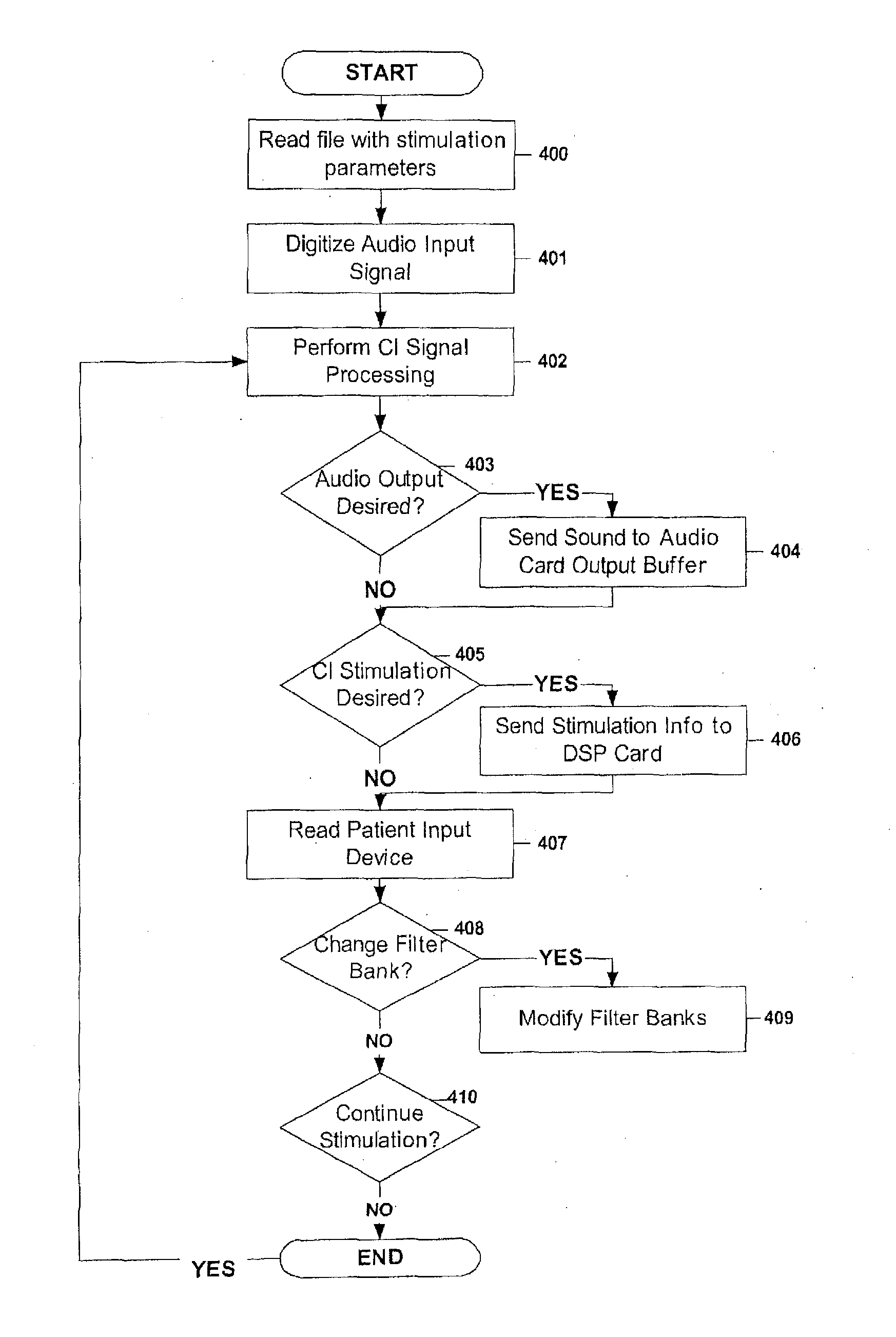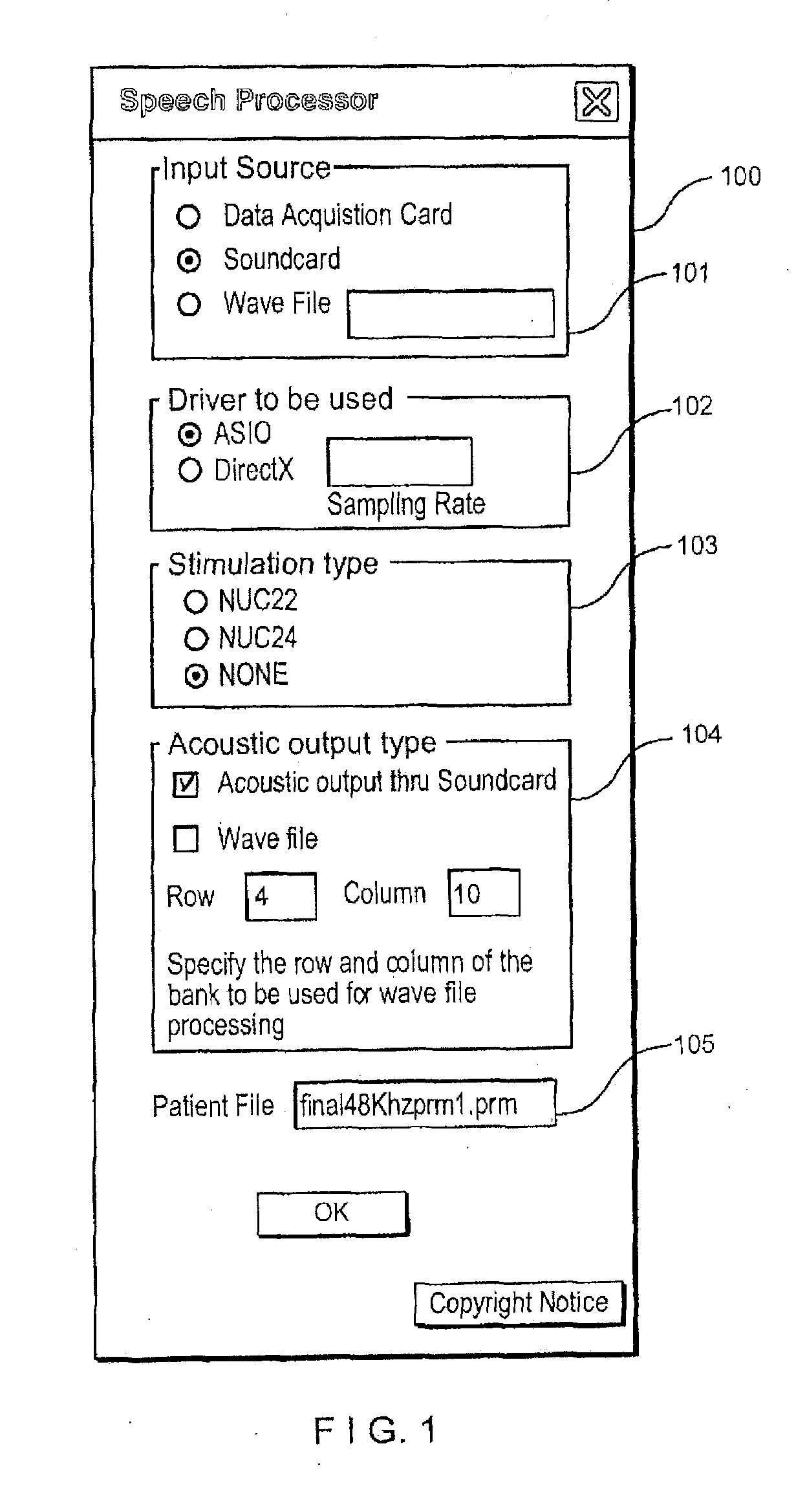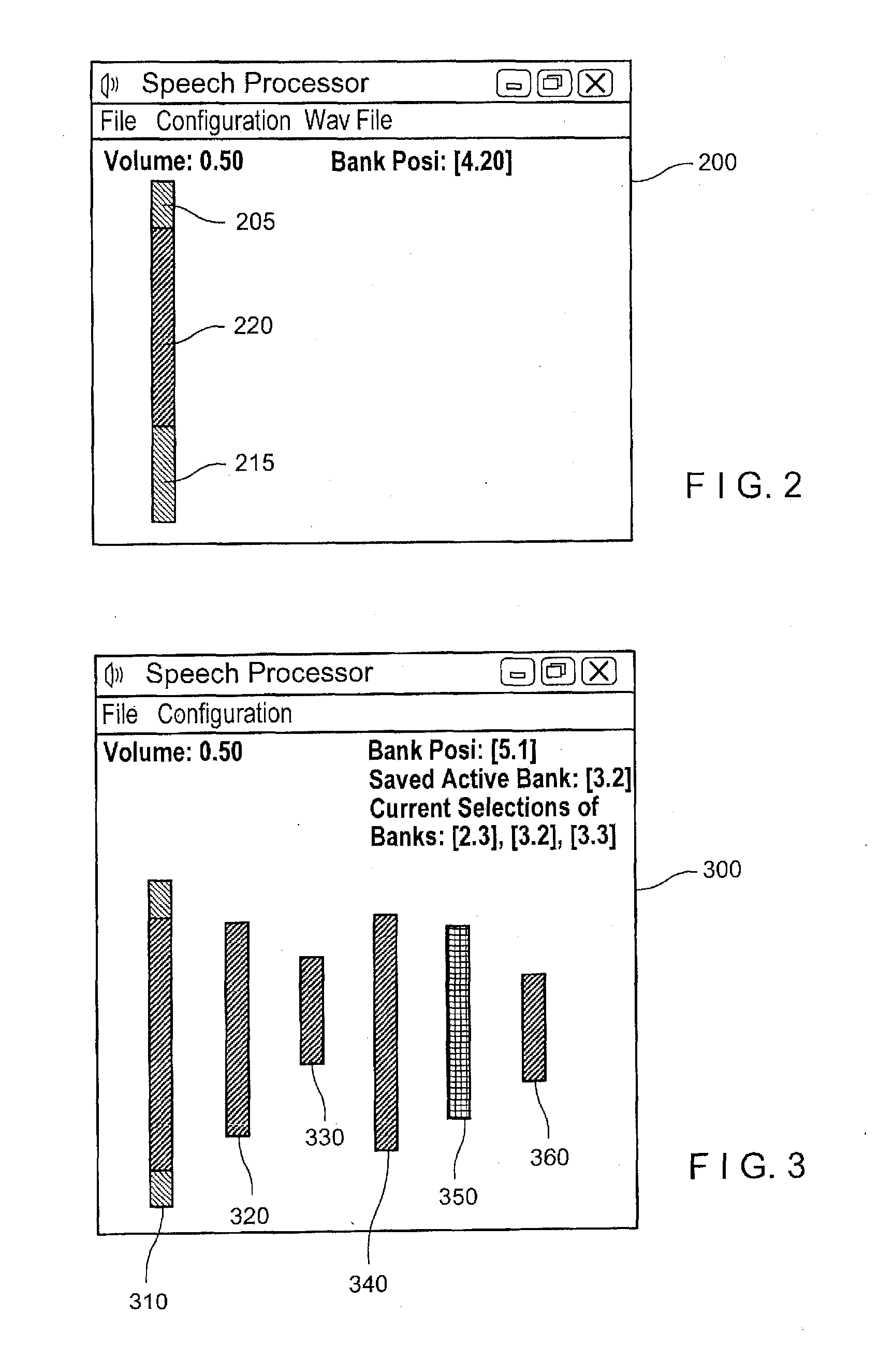Cochlear implant fitting system
a cochlear implant and fitting system technology, applied in the field of electrical stimulation and frequency mapping of an installed cochlear implant, can solve the problems of ci's deformation, frequency shift, and difficulty in detecting the ci signal, and achieve the effect of reducing the difficulty of speech processing
- Summary
- Abstract
- Description
- Claims
- Application Information
AI Technical Summary
Benefits of technology
Problems solved by technology
Method used
Image
Examples
Embodiment Construction
[0017]The present invention may be further understood with reference to the following description and the appended drawings. An exemplary embodiment of the present invention is directed to a system and method for providing stimulation information to a CI in real time, to facilitate the selection of a frequency-to-electrode map suited to the auditory requirements for a patient.
[0018]Under conventional CI techniques, several months are required for a patient to reach an asymptotic level of speech perception. As described above, conventional CIs distort auditory input due to frequency mismatch between the speech processor's analysis filters and the characteristic frequency of the stimulated neurons resulting from physical limitations in electrode insertion depth. In accordance with the exemplary embodiment of the present invention, a user of the CI is allowed to select a preferred frequency-to-electrode map, under the assumption that the user of the CI is best suited to select a freque...
PUM
 Login to View More
Login to View More Abstract
Description
Claims
Application Information
 Login to View More
Login to View More - R&D
- Intellectual Property
- Life Sciences
- Materials
- Tech Scout
- Unparalleled Data Quality
- Higher Quality Content
- 60% Fewer Hallucinations
Browse by: Latest US Patents, China's latest patents, Technical Efficacy Thesaurus, Application Domain, Technology Topic, Popular Technical Reports.
© 2025 PatSnap. All rights reserved.Legal|Privacy policy|Modern Slavery Act Transparency Statement|Sitemap|About US| Contact US: help@patsnap.com



